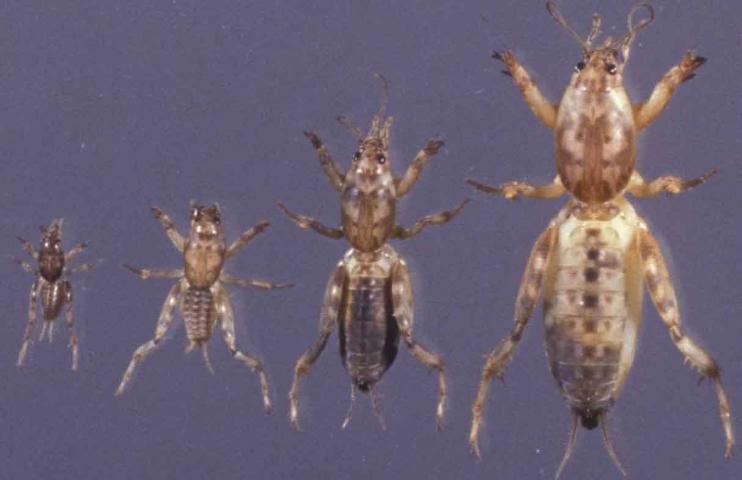
by Larry Williams | Jun 25, 2019
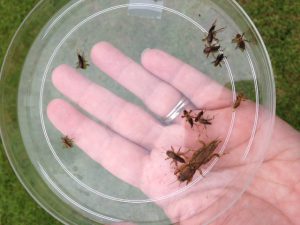
Adult and nymphs of mole crickets. Photo: Julie McConnell, UF/IFAS
The best time to treat for mole crickets is during June through July. But don’t treat at all if mole crickets have not been positively found and identified in the affected lawn areas.
Don’t worry about the adults that are seen flying around lights in the evenings or about the mole crickets found dead in swimming pools this time of year. They are in a mating phase and are doing very little to no damage to lawns during late winter and spring.
We can take advantage of the fact that there’s only one generation per year in North Florida. The eggs will have all hatched by mid to late June. At that time, you’re dealing with young mole crickets that can’t fly and that are much more susceptible to the insecticides designed to kill them. Mole crickets spend winter as adults in the soil. In late February and March, adults emerge and begin mating. Shortly after mating, males die and females fly to suitable areas for egg laying. Mated females deposit eggs in tunnels. After depositing her eggs the female dies. Attempting to control adult mole crickets during this mating period a waste of time, money and product. Plus, adult mole crickets are difficult to control and can easily fly out of treated areas.
You can easily determine if mole crickets are the cause for your lawn problem by flushing them out with a soap and water mixture.
Mix 1½ ounces of a lemon scented liquid dish-washing soap in two gallons of water in a sprinkling can or bucket. Pour the soapy water over an area approximately four square feet and count the number of mole crickets that emerge. It only takes several minutes for mole crickets to crawl to the surface after the soap treatment if they are present. Repeat the process around the yard where you suspect mole cricket problems. If you flush an average of two to four crickets are flushed out per site, control may be needed.
There are a number of insecticides on the market to control mole crickets. But before using any product, first identify the problem as mole cricket damage by using the soap flush technique. Then choose a lawn insecticide that lists mole crickets on its label. And finally read the label carefully for use directions, application techniques, irrigation requirements and precautions.
For more information on mole crickets, including recommended insecticides and other non-chemical control options, contact the UF/IFAS Extension Office in your County or access the following links.
Insect Pest Management on Turfgrass
Shortwinged Molecricket
Mole Cricket IPM Guide for Florida
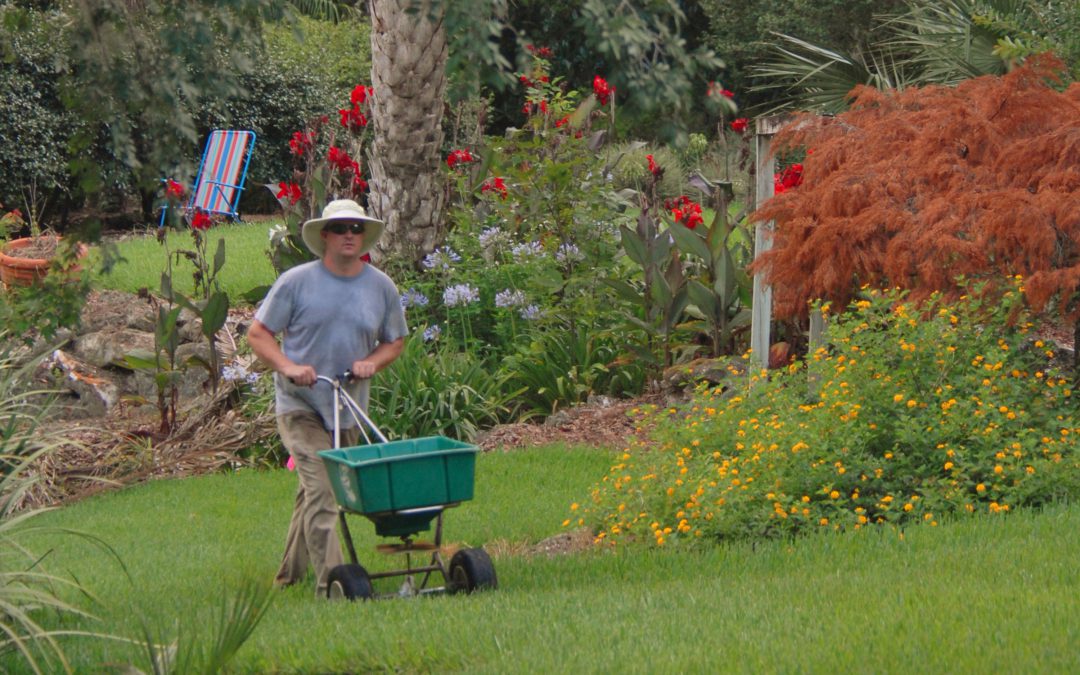
by Matt Lollar | Apr 9, 2019
The Evidenced-Based Zoysiagrass Management Workshop is returning to Milton on April 23 at the University of Florida – Milton Campus. Attend to get updates on managing zoysiagrass and to earn CEUs. Register at: UF/IFAS Evidence-Based Zoysiagrass Workshop

by Ray Bodrey | Sep 6, 2018
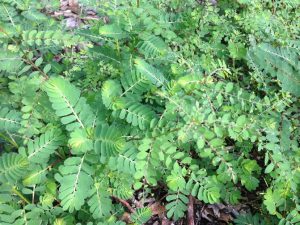
Figure 1: Chamberbitter, a common annual weed.
Credit: Mary Salinas, UF/IFAS Extension Santa Rosa County.
With daily rainfall occurring regularly, coupled with humid temperatures, summer annual weeds have had a mighty boost in growth. Chamberbitter, Florida pusley, sedge and oxalis are just some examples of the many weeds that are exploding across our landscape.
Chamberbitter (Phyllanthus urinaria) is found as north as Illinois and as west as Texas, but thrives in lower southeastern states. It’s a headache for homeowners as well as pasture managers. The foliage resembles that of the mimosa tree (Albizia julibrissin) and can be confused with the native mimosa groundcover, known as powderpuff mimosa (Mimosa strigillosa). This plant grows upright and develops a long taproot. Wart-like seeds can be found on the underside of the branch.
Florida Pusley (Richardia scabra L.) also known as Florida snow or Mexican clover, has recently blanketed landscapes in the Panhandle with white flowers. It’s a persistent weed that moves quickly.
Sedges and sedge-like plants (Cyperus ssp.), known as kyllinga, are species that emerge in late spring and thrive in summer months in warm, moist climates. Excessive irrigation or areas with poor drainage create a very hospitable environment for these weeds. Sedges are annual grass-like plants have an elaborate flower-bearing stems. Yellow and purple nutsedge are the most common species. Kyllingas have smaller leaves and are less vertical. Sedges and kyllingas are fast spreading, and reproduce through seed and rhizomes, or underground tubers.
Oxalis or yellow woodsorrel (Oxalis stricta) have heart-shaped lobes and have a bright yellow flower. Oxalis reproduces by seed and have a narrow “okra-like” seed pod.

Figure 1: (L to R) Chamberbitter, Pusley, Sedge, Kyllinga & Oxalis.
Credit: Stephen H. Brown, UF/IFAS Extension Lee County
What about control? Some cultural control methods are hand removal and mowing frequently to offset the life cycle, but these practices alone will most likely not solve the problem. There are many broad spectrum herbicides that can be used to control these weeds with good results, but you must be persistent. Some are season long applied products. However, most effective products need to be applied in cooler temps than we have now. Consecutive days of temperatures of less than 90 degrees would be optimal. Applying the chemical otherwise will most likely harm the turfgrass. Be aware, some productions will injure or kill centipede and St. Augustine, but are safe to use on other turfgrasses like bermuda, bahia and zoysia. Be sure to read the label and follow the directions and precautions.
Another option is non-selective herbicides, like glyphosate, which can be used in thick patches or for spot treatment. When using a selective herbicide, remember to protect turfgrass and other plants from spray drift or any contact, especially regarding ornamental plants and trees.
Contact your local county extension office for more information.
Supporting information for this article is from the following online publications:
Clemson Cooperative Extension publication: “Chamberbitter”, Bulletin HCIC 2314: http://www.clemson.edu/extension/hgic/pests/pdf/hgic2314.pdf
UT Institute of Agriculture document, “Nutsedge and Kyllinga Species” by Mathew T. Elmore, James T. Brosnan and Gregory K. Breeden: http://www.tennesseeturfgrassweeds.org/Lists/Fact%20Sheets/Attachments/23/W260updated2015.pdf
UF/IFAS EDIS publications: “Yellow Woodsorrel (Oxalis) Biology and Management in Turf” by J. Bryan Unruh, Ramon G. Leon, and Darcy E. P. Telenko: http://edis.ifas.ufl.edu/pdffiles/EP/EP38500.pdf
“Weed Management Guide for Florida Lawns” by J. Bryan Unruh, Ramon G. Leon, Barry J. Brecke, and Laurie E. Trenholm: http://edis.ifas.ufl.edu/pdffiles/EP/EP14100.pdf
UF/IFAS Extension is an Equal Opportunity Institution.
by Ray Bodrey | May 4, 2018
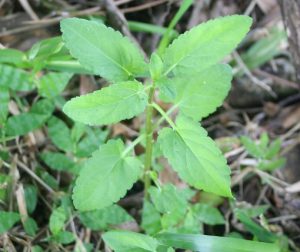
Figure 1: Florida Betony, Stachys floridana. Credit: UF/IFAS Range Cattle Research & Education Center.
If you look closely at your yard, there is a good chance that you will find a plant that, depending on who you ask, is considered either a native wildflower or a weed and there are more than a few species that fit this description. If, upon even closer inspection, you find a plant with root tubers that resemble egg casings or even a rattlesnake’s rattle, you’ve stumbled upon Florida Betony.
Stachys floridana is a perennial broadleaf commonly referred to as rattlesnake weed due to it’s fleshy, white, segmented underground tubers. The plant has an erect stem with leaves that are opposite, shovel-shaped and coarsely serrated. The plant structure is very similar to mint. Flowers, emerging in late spring, are pinkish-purple in color. These inflorescences will also produce fruit, consisting of four nutlets. However, reproduction of the plant and it’s propensity to spread through lawns and gardens primarily occurs through dense root tuber development. Florida Betony’s growing range was originally confined to the state of Florida, but the commercial nursery trade played a major hand in dispersing the plant across the Southeast in the mid-1900’s. It can now be found as far west as Texas and as far north as North Carolina.
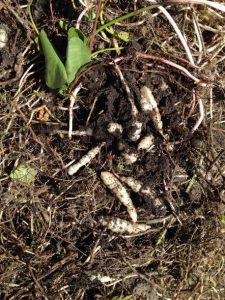
Figure 2: Tubers of the Florida Betony. Credit: Jill Bebee, UF/IFAS Gulf County Master Gardener.It can now be found as far west as Texas and as far north as North Carolina.
This time of year is when Florida Betony thrives. The moderate temperatures of fall and spring are the prime growing periods for Betony. In the heat of the summer, the above-ground structure of the plant will struggle and often disappear completely, only to reemerge in the fall. As a lawn weed, managing tuber development is key to controlling this plant. Applying herbicide to the leaves and stalk may seem at first to have conquered the weed. However, in most cases the tuber will simply regenerate. Glyphosate (Roundup) can be used effectively for control in ornamental plant beds where no turf is present. Be careful when spraying herbicides around trees, shrubs and other desirable plants as any foliar contact will cause phytotoxicity. If you have an infestation of Florida Betony in your turfed areas, there are a few options for control. Regular applications of three way broadleaf herbicides, such as mixtures of 2-4D, Dicamba and Mecoprop, are effective at suppressing this pesky plant. For more information and options, please contact your local county extension office or see the supporting information links below. Always refer to the product label for specific uses, precautions and application rates when using any herbicide.
Supporting information for this article can be found in the following the UF/IFAS EDIS publication, “Florida Betony Biology and Management in Turf” by J. Bryan Unruh, Ramon G. Leon, and Darcy E. P. Telenko: http://edis.ifas.ufl.edu/pdffiles/EP/EP38800.pdf

by Les Harrison | Apr 23, 2018
Spring 2018 is barely out of the starting gate. All kinds of plants are sprouting and producing blooms! This week’s last gasp of winter temperatures slowed the progress, but only slightly.
Much like the Easter egg hunts a few weeks ago, a search of the landscape can bring multiple surprises. Two colorful plants, spiderwort and rustweed, which are growing in the region fit into this category.
Tradescantia ohiensis, the scientific name for spiderwort, is a herbaceous native plant. Its most striking feature which makes it easily identifiable is the cluster of bright purplish-blue blooms which are currently on display.

Spiderwort in full flower. Image Credit Les Harrison
To the casual listener, the name spiderwort implies an arachnid with a complexion issue. Far from it, but the terminology is shrouded in agriculture and horticulture history.
The term wort, in its various forms, can be traced back to northern Europe to well over 1,000 years ago. Its meaning related at first to herbs, and then to plants without bark or hard stems.
It should not be confused with wart, a skin eruption relating to a virus. Contact with any part of the spiderwort does not infect a person with warts.
The spider part of the name relates to the flower peddles. In harsh sunlight of the afternoon, the Spiderwort’s peddles are reduced to fine threads similar to a spider’s web.
Spiderworts are often seen along fencerows, in pastures and untended fields, and it forested areas. They bloom from late spring to early summer and usually grow in clumps or bunches of plants.
The plant clumps are easily separated and transplanted. Spiderwort has been used in ornamental horticulture as a showy, low-cost alternative for many years.
They expand their presence in the wild slowly, but persistently. Since there are no herbicides labeled for their control, they are considered a pest species by some hay producers.
Another plant with a colorful name, and which is considered a pest, is the rustweed (Polypremum procumbens). While it does not literally rust, it gets its name from its rust colored foliage in the autumn.
In spring and summer this low growing perennial is a Kelly green fitting for St. Patrick’s Day, and easily blends with Bermudagrass and other turfs as they make their season emergence. Tiny white blooms soon to come will confirm it presence, but this is often overlooked when in landscapes and lawns.
This plant spreads by seed, which are small and heart-shaped. One means of colonizing new areas is by seed lodging in mowing and other equipment, then depositing in new areas when the equipment is relocated.
As with all grasses in the Florida panhandle, rustweed is found only in sunny areas. This little known plant is an area native, but also occurs as far away as South America.
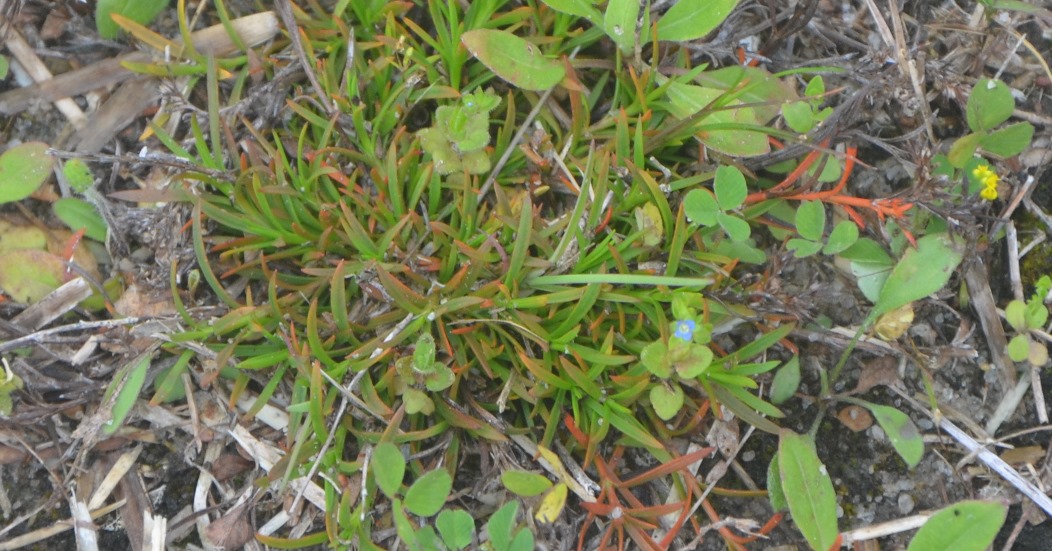
Rustweed, among others, in a Florida lawn. Image Credit Les Harrison
This aggressive native will quickly establish itself and push out other more desirable species. Mowing will not slow its progress.
After the multiple frost and muted earth tones, both spiderwort and rustweed are currently adding variation to the landscape’s hues as the weather warms.
To learn more about weeds in north Florida, contact your local UF/IFAS County Extension Office. Click here for contact information.
by Larry Williams | Apr 16, 2018
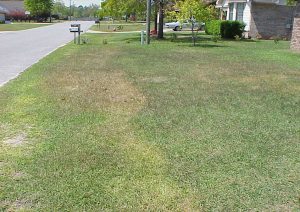
Cold injury to lawn. Photo Credit: Larry Williams
Patience, warmer soil temperature and correct lawn management will solve many spring lawn problems.
Many spring dead spots in lawns are caused by something that happened the previous growing season or winter. For example, a late application of a high-nitrogen fertilizer can decrease winter survival. It’s best to not fertilize our lawns after early September.
An insect or disease problem during fall many times goes unseen as the grass is beginning to go dormant. The following spring, as the lawn begins to green up, evidence of a fall pest is clearly visible by brown dead, grass. The pest may not be present or active during spring.
Poor maintenance practices may be to blame for spring dead spots. Over-watering, shallow watering (watering frequently for short periods), mowing too low, too much fertilizer and herbicide injury can result in poor lawn performance come springtime.
Regardless of cause, problem areas within lawns are slow to recover during spring due to frequent cool night temperatures. Frequent cool nights keep the root zone cool.
Cool soil temperature doesn’t allow rapid root regeneration in spring, which inhibits top growth in your lawn. Cool soil also decreases availability of some needed nutrients. For example, poor availability of iron because of cool soil is a common cause for bright yellow areas within lawns, especially in centipedegrass. Cool soil also decreases availability of phosphorus and potassium, which can result in reddish-purple grass blades, intermingled throughout the yard. As soil temperature increases, availability of nutrients improves and the yellow and purple areas turn green.
Have patience with your lawn and follow good maintenance practices this spring. Provide ½ to 1 inch of water when the grass shows signs of wilt. Fertilize and lime based on the results of a reliable soil test. And, mow at a high setting. Good lawn maintenance info is provided at the YourFloridaLawn website.
Consistently warmer nights will allow the soil temperature to warm, which will improve turf root growth, nutrient availability and lawn recovery. During many years in North Florida, it’s well into the month of May before our lawns begin to recover.
If the lawn has not made a comeback by late spring or early summer, it may be time to consider reworking and replanting the dead areas or maybe consider replacing them with something other than grass, if practical.










